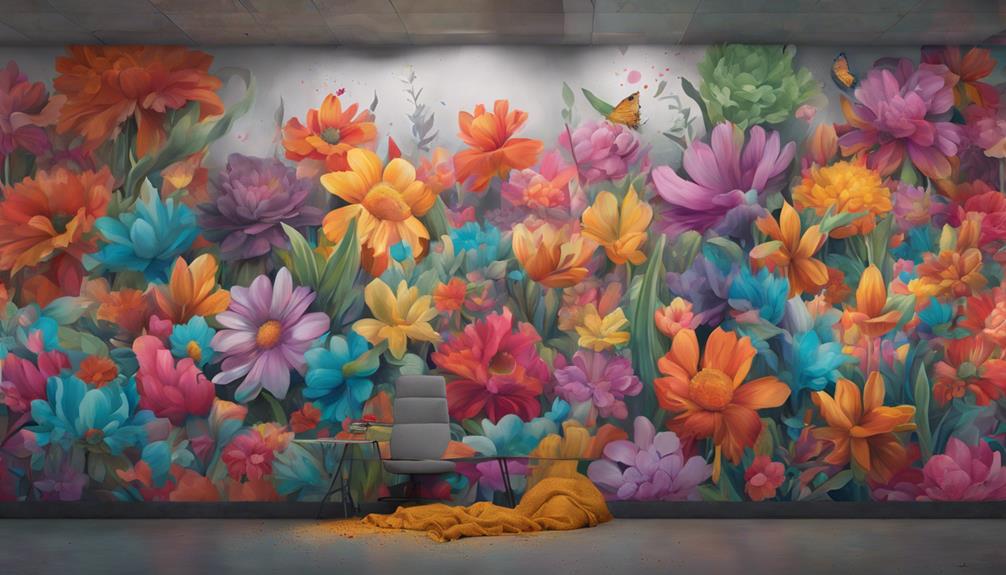Art, often viewed through a lens of subjective interpretation, possesses a profound significance that transcends mere aesthetics. Its impact on human cognition, emotion, and social dynamics is a subject of enduring interest and scholarly inquiry. By examining the multifaceted dimensions of art, we can discern its intricate interplay with cognition, emotion, and society, shedding light on its intricate role in shaping our perceptions and experiences. Through a systematic exploration of the importance of art, we uncover a tapestry of insights that elucidate its far-reaching implications for individuals and communities alike.
Key Takeaways
- Art fosters creativity, innovation, and personal growth.
- Art promotes cultural understanding, unity, and dialogue.
- Art contributes to mental well-being and emotional expression.
- Art drives societal change, challenges norms, and advocates for progress.
Art as a Form of Expression
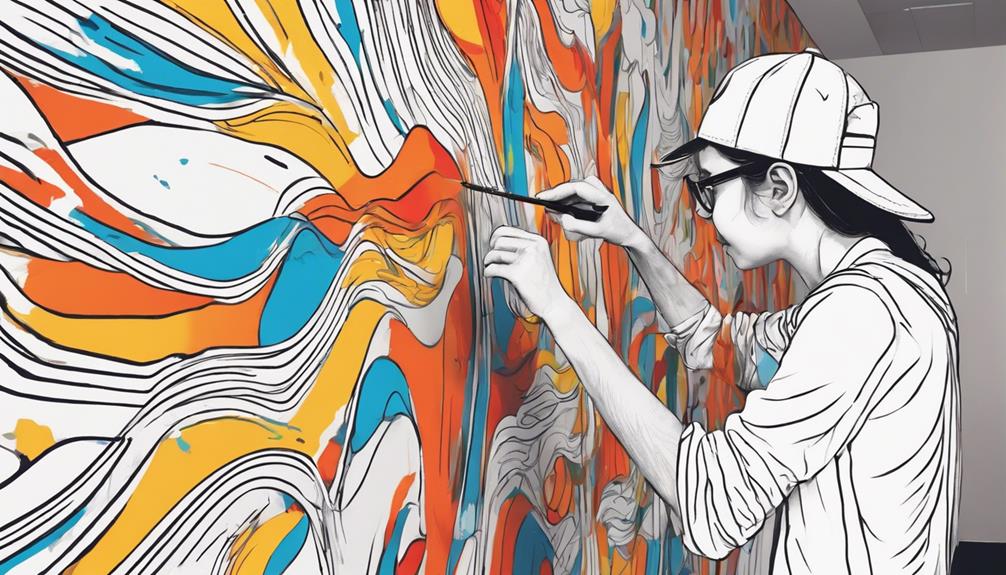
How does art function as a powerful medium for individuals to visually convey emotions, thoughts, and ideas? Art serves as a profound outlet for individuals to express the complexities of the human experience. Through various artistic mediums like painting, sculpture, and photography, artists can communicate intricate emotions, abstract thoughts, and profound ideas that may be challenging to articulate through words alone. This visual form of expression enables artists to delve into the depths of the human psyche, exploring themes such as love, loss, joy, and resilience.
Cultivating Creativity Through Art
Engaging in artistic endeavors sparks creativity by challenging individuals to think beyond conventional boundaries. Through art, individuals can experiment with novel ideas and techniques, fostering a culture of innovation and originality. The process of creating art equips individuals with problem-solving skills and the flexibility to approach challenges from diverse angles.
Inspiring Imagination in Art
Artistic endeavors have long been recognized as essential catalysts for nurturing creativity and inspiring imagination in individuals of all ages and backgrounds. Art inspires imagination by encouraging individuals to think outside the box, fostering innovative problem-solving, and unique perspectives. Engaging with art forms like painting, sculpture, and music nurtures the ability to envision and create something original. Through artistic expression, individuals can tap into their inner creativity, leading to personal growth and a deeper understanding of the world. To illustrate the impact of art on inspiring imagination, consider the following table:
| Artistic Endeavors | Impact on Imagination |
|---|---|
| Encourages creativity | Explores new possibilities |
| Fosters problem-solving | Provides unique perspectives |
| Nurtures originality | Stimulates innovative thinking |
Fostering Originality Through Art
The cultivation of creativity through art serves as a pivotal pathway towards fostering originality in individuals, encouraging them to explore unique perspectives and express their innovative capabilities. By engaging in artistic endeavors, individuals can nurture their imagination, enhance problem-solving skills, and develop innovative thinking processes. Creative art forms such as painting, sculpture, and music offer platforms for individuals to experiment and challenge boundaries, fostering a culture of originality and innovation. Through artistic expression, individuals experience a sense of freedom and openness to new ideas, enabling them to break away from conventional norms and cultivate their unique artistic voice. Ultimately, art plays a crucial role in encouraging individuals to think outside the box, embrace creativity, and contribute authentically to the world of innovation.
Art's Role in Developing Soft Skills
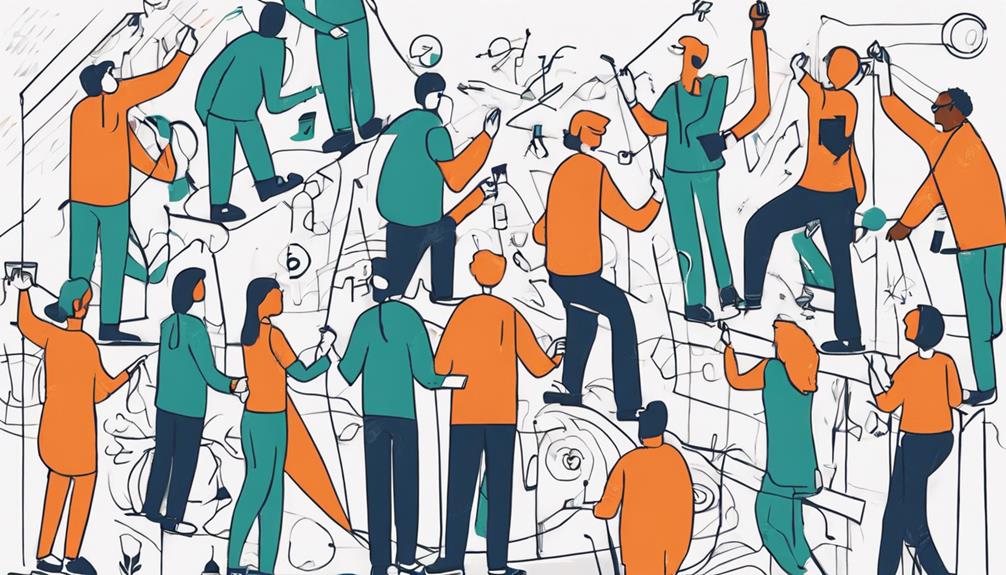
Art plays a crucial role in enhancing communication skills and fostering creativity and innovation. The development of soft skills such as effective communication and creative problem-solving through art education is instrumental in preparing individuals for success in various professional settings. By engaging in artistic activities, individuals not only refine their communication abilities but also cultivate a mindset that values creativity and adaptability in navigating the complexities of the modern workplace.
Enhancing Communication Skills
Enhancing communication skills through engagement with various art forms is crucial for developing soft skills in individuals.
- Art encourages creativity, expression, and interpretation, enhancing verbal and non-verbal communication abilities.
- Participation in activities like drawing, painting, and storytelling improves communication skills.
- Engaging with theater, music, and dance fosters empathy, emotional intelligence, and understanding diverse perspectives.
- Artistic expression develops active listening skills, collaboration, and the ability to convey complex ideas effectively.
Fostering Creativity and Innovation
In fostering creativity and innovation, engagement with various art forms plays a pivotal role in cultivating essential soft skills for navigating challenges in today's dynamic environments. Art fosters creativity by encouraging individuals to think outside the box and explore new ideas, leading to breakthroughs in various fields. Developing soft skills through art, such as problem-solving and adaptability, enhances one's ability to navigate challenges effectively. Art also promotes innovation by pushing individuals to experiment, take risks, and find unique solutions to problems. The process of creating art hones skills like communication, collaboration, and resilience, which are essential in today's dynamic work environments.
| Soft Skills | Description | Importance |
|---|---|---|
| Problem-solving | Finding effective solutions | Navigating complex challenges |
| Adaptability | Adjusting to new situations | Thriving in changing environments |
| Creativity | Thinking innovatively | Driving unique solutions |
Understanding History Through Art
By delving into the visual narratives embedded within historical artworks, one can unravel the intricate tapestry of past civilizations and glean profound insights into the values that shaped societies across time periods. Art provides a window into the past, offering glimpses of historical events, cultures, and societal norms. Understanding history through art is essential as historical artworks serve as primary sources for comprehending the beliefs and ideologies of bygone eras. Through artistic movements, one can discern the social, political, and economic contexts that influenced different time periods. Artists, by immortalizing historical figures, events, and landscapes, contribute to the preservation of history for future generations. Studying art from various eras provides valuable insights into the evolution of human societies and their artistic expressions, shedding light on the progression of civilizations through time.
Art's Contribution to Cultural Discourse
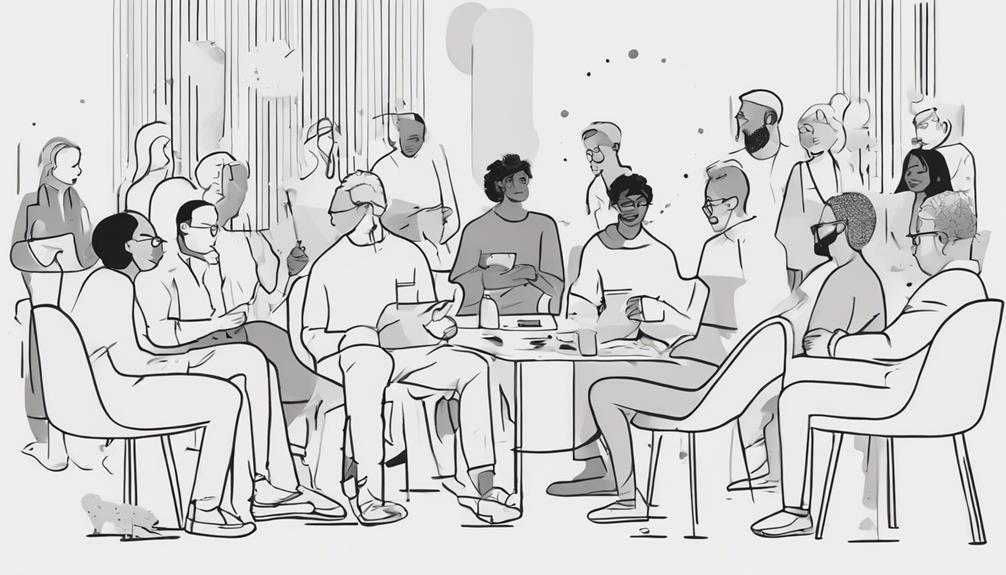
Art plays a pivotal role in shaping cultural discourse through its reflection of the values, beliefs, and traditions embedded within societies across different historical epochs. Various art forms such as paintings, sculptures, and architecture offer profound insights into the cultural contexts in which they were created. These artistic expressions not only provide a glimpse into the past but also serve as a medium for exploring and challenging societal norms, sparking important conversations and debates within a culture. By sharing diverse perspectives and narratives, art enriches cultural understanding and fosters empathy among individuals. The interpretation of art varies across cultures, emphasizing the significance of art in shaping and preserving cultural identity.
| Artistic Contribution | Impact on Cultural Discourse |
|---|---|
| Reflection of values, beliefs, and traditions | Offers insights into cultural contexts |
| Challenging societal norms | Sparks important conversations |
| Sharing diverse perspectives | Enriches cultural understanding |
Art as a Unifying Social Space
Serving as a nexus of communal interaction and shared appreciation, the realm of artistic expression acts as a vital conduit for fostering social cohesion and interconnectedness among individuals of diverse backgrounds. Art provides a platform for people to come together, transcending cultural differences and fostering a sense of unity. Here are some key ways in which art serves as a unifying social space:
- Art exhibitions, galleries, and cultural events: These settings offer opportunities for individuals to interact, share experiences, and connect through their mutual appreciation of creative expressions.
- Public art installations: By creating shared spaces in urban environments, public art installations encourage communities to gather, discuss, and reflect on the artwork, thereby enhancing a sense of unity and belonging.
- Art workshops and collaborative projects: Participation in these activities facilitates social interaction, collaboration, and mutual understanding among participants, strengthening bonds and fostering inclusivity.
- Encouraging dialogue and empathy: Art as a unifying social space promotes cultural exchange, empathy, and dialogue, fostering harmony and mutual respect within society.
Beauty and Inspiration in Art
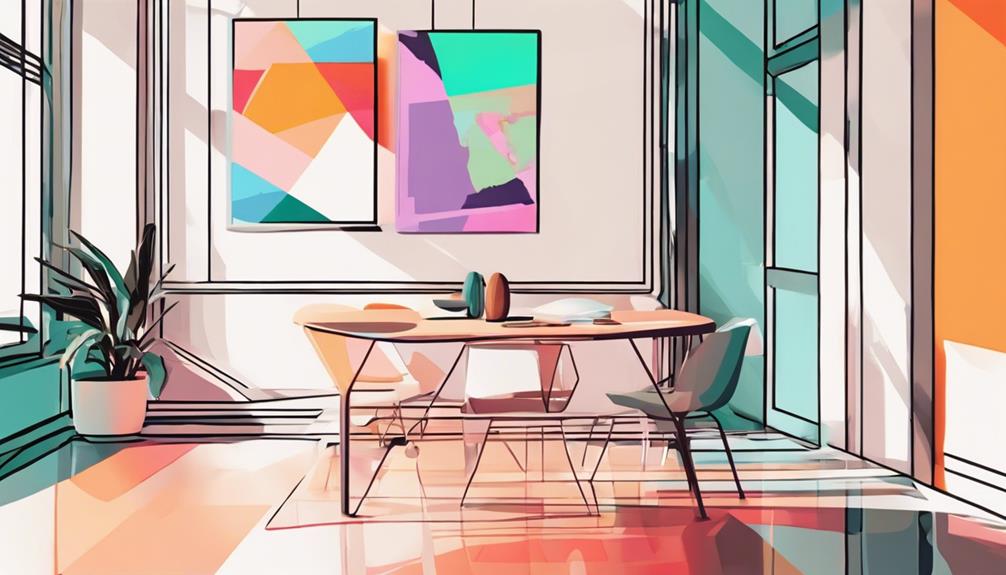
In the realm of artistic expression, the intertwining concepts of beauty and inspiration serve as fundamental pillars that elevate the human experience and provoke profound emotional responses. Art inspires creativity and imagination, providing a platform for artists to convey their perspectives and evoke powerful emotions in viewers. The beauty found in art transcends language barriers, connecting individuals universally. Through art, people find inspiration, solace, and a deeper appreciation for the world around them.
| Beauty | Inspiration |
|---|---|
| Elicits emotional responses | Sparks creativity |
| Transcends language barriers | Encourages imagination |
| Connects people universally | Promotes introspection |
Artistic creations not only captivate the eye with their beauty but also stimulate the mind, encouraging contemplation and reflection. The inspiration drawn from art often extends beyond the visual, influencing individuals in various aspects of their lives. Beauty in art is not merely superficial; it has the power to touch the soul and evoke profound feelings that resonate deeply within us.
The Impact of Artistic Expression
The exploration of artistic expression delves into the profound impact of creative endeavors on emotional well-being and societal engagement. Artistic expression, encompassing fine art such as visual arts, music, dance, and literature, holds significant importance in various aspects:
- Artistic expression through fine art fosters emotional catharsis and self-discovery, allowing individuals to delve into their innermost feelings and experiences.
- Creative outlets like painting, writing, and sculpting provide a powerful means for individuals to communicate complex emotions and thoughts that may be challenging to express verbally.
- Studies have shown that engaging in artistic expression is linked to improved mental health, stress reduction, and increased self-esteem, highlighting the therapeutic benefits of fine art.
- Through fine art, individuals can challenge societal norms, provoke critical thinking, and inspire positive change within their communities, showcasing the transformative power of creative endeavors.
In essence, artistic expression through fine art not only enhances individual well-being but also plays a crucial role in shaping societal dynamics and fostering meaningful connections among people.
Fostering Innovation and Imagination
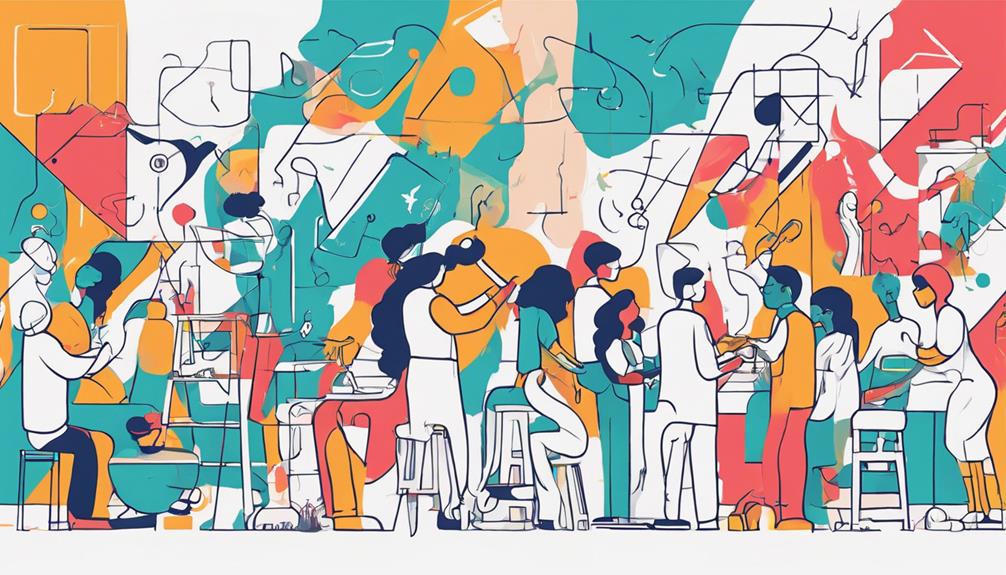
Art serves as a catalyst for innovation by challenging individuals to think creatively and explore unconventional concepts. Through artistic expression, the imagination is nurtured, enabling individuals to envision new solutions to complex problems. Engaging with art not only stimulates imaginative exploration but also cultivates a mindset that encourages the generation of novel ideas and approaches.
Inspiring Creative Thinking
Inspiring creative thinking through exposure to artistic stimuli catalyzes innovative ideation and fosters a climate ripe for imaginative problem-solving. Art serves as a catalyst for innovative thoughts and solutions by encouraging individuals to break away from conventional thinking patterns. This process leads to the exploration of unique perspectives and the development of unconventional ideas. The impact of art on creative thinking can be seen in various fields where it drives advancements and fosters a culture of innovation. By tapping into one's imagination, art enables individuals to generate fresh concepts and approaches to tackle challenges effectively. Through this creative stimulation, art plays a pivotal role in shaping a future filled with groundbreaking ideas and solutions.
- Art challenges individuals to think outside the box.
- Encourages exploration of new perspectives.
- Pushes the boundaries of traditional thinking.
- Fosters a culture of innovation in various fields.
Encouraging New Ideas
Encouraging new ideas hinges on the cultivation of a mindset that challenges conventional boundaries and nurtures a culture of innovative thinking and imaginative exploration. Art gives us a platform to push the limits of creativity, inspiring fresh perspectives and unconventional approaches to problem-solving. By encouraging experimentation and embracing diverse viewpoints, art fosters a spirit of curiosity that fuels the generation of original thoughts and ideas. Through artistic expression, individuals can explore uncharted territories, sparking innovation across various fields. This culture of exploration and creativity not only enriches our understanding of the world but also propels progress by encouraging us to think beyond the confines of established norms.
| Art Encourages New Ideas | ||
|---|---|---|
| Provides platform for innovation | Challenges conventional thinking | Inspires creative problem-solving approaches |
| Pushes boundaries, explores new concepts | Envisions alternative realities | Fosters a culture of curiosity |
| Fuels development of original thoughts | Sparks innovation in various fields | Drives progress by thinking beyond norms |
Stimulating Imaginative Exploration
Stimulating imaginative exploration fosters a culture of innovation and creativity by encouraging individuals to venture beyond conventional boundaries and explore novel possibilities with a critical and analytical mindset.
- Art enhances imaginative thinking.
- Innovation thrives on imaginative exploration.
- Imagination leads to unique problem-solving approaches.
- Artistic creativity inspires fresh perspectives.
Imagination plays a pivotal role in the realm of art, pushing the limits of what is known and challenging individuals to break free from traditional molds. Through fostering imaginative exploration, art not only nurtures creativity but also serves as a catalyst for innovation in society. By encouraging individuals to delve into the realm of the unknown and embrace unconventional ideas, art paves the way for groundbreaking advancements and imaginative solutions to complex issues.
Art's Influence on Emotional Well-being
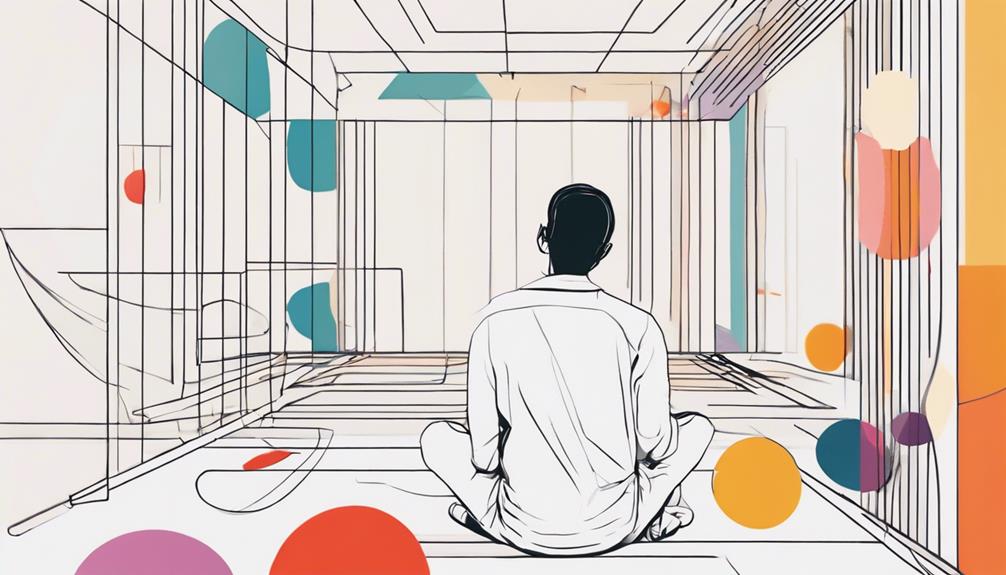
Engaging with art has demonstrated a significant impact on reducing stress, anxiety, and depression, thus contributing to enhanced emotional well-being. Studies have shown that both creating and experiencing art can have profound effects on emotional health. Art has the power to increase feelings of happiness, stimulate creativity, and facilitate self-expression, all of which are crucial components of positive mental well-being. Additionally, art therapy, a recognized form of treatment, utilizes artistic expression to help individuals process emotions and improve their overall mental wellness.
Furthermore, engaging with art can enhance empathy, self-awareness, and emotional intelligence, which are essential for building strong relationships and effective communication skills. Art provides a safe and non-verbal medium for emotional exploration, allowing individuals to express and work through complex feelings in a supportive environment. By offering a platform for emotional expression and reflection, art plays a vital role in promoting emotional well-being and fostering mental health.
Art's Reflection of Society
Art serves as a reflective medium that intricately mirrors the values, beliefs, and norms of society through visual representations and cultural expressions. It acts as a powerful tool for capturing the essence of a time period, reflecting societal emotions, struggles, triumphs, and aspirations. Through various art forms like paintings, sculptures, and literature, art provides a window into the collective consciousness of a society, revealing its complexities and nuances. Artists use their creations to critique, challenge, or celebrate societal issues, sparking conversations and provoking thought. Furthermore, art documents historical events, social movements, and cultural shifts, preserving them for future generations to understand and learn from. By examining art, one can gain valuable insights into the past and present societal landscapes, witnessing how different eras have shaped and been shaped by the prevailing values and beliefs of their time.
Art's Power to Drive Change
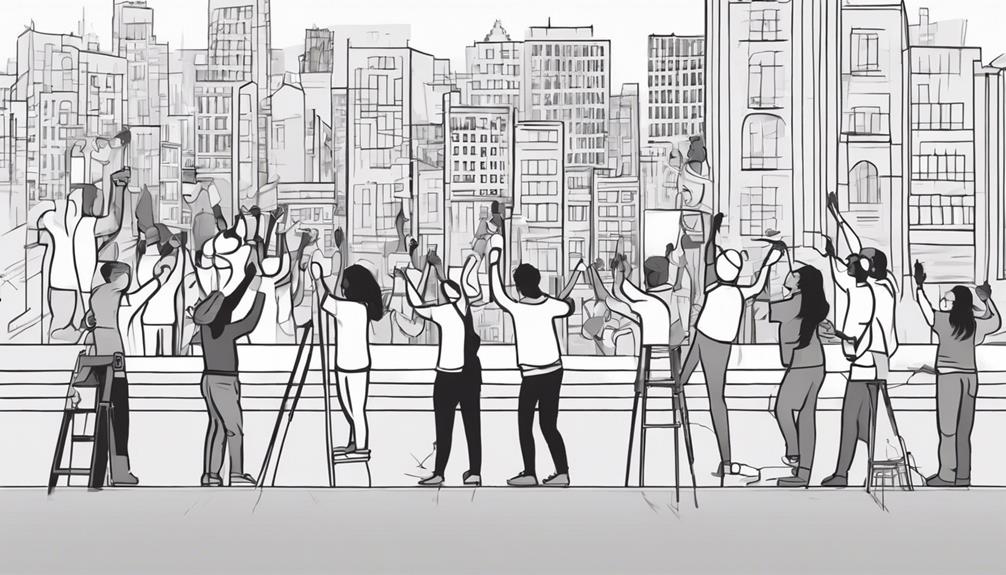
Artistic expression has long been recognized as a catalyst for societal transformation and progress. Art possesses the unique ability to instigate social change by challenging existing norms and bringing attention to critical issues. Through various art forms, individuals can advocate for social justice, equality, and reform. Movements such as street art and protest art have played pivotal roles in driving political and social transformations throughout history. Artists utilize their creativity to raise awareness about pressing global challenges, including environmental issues and human rights violations. By conveying powerful messages through their work, artists inspire action, empathy, and solidarity among communities striving for positive change. Art serves as a potent tool for sparking conversations, provoking thought, and mobilizing individuals towards a common goal of creating a more just and equitable society. In essence, art's power to drive change lies in its capacity to amplify voices, challenge the status quo, and ignite movements dedicated to fostering social progress.
Frequently Asked Questions
Why Is Art Important to Our Life?
Art is vital to our lives due to its profound impact on mental health and well-being. Through art therapy, individuals can engage in a therapeutic process that allows for emotional expression, stress relief, and self-discovery. This form of creative intervention has been shown to improve mood, reduce anxiety, and enhance overall quality of life. Utilizing art as a therapeutic tool demonstrates the intrinsic connection between artistic expression and psychological healing.
What Are the 5 Purposes of Art?
Art serves five main purposes, with one significant role being in art therapy. Through art therapy, individuals can express their thoughts and emotions in a non-verbal manner, aiding in self-exploration and healing. Additionally, art serves as a means of communication, cultural expression, and aesthetic enjoyment. It can also provoke critical thinking and societal reflection. These purposes collectively highlight the diverse and impactful roles that art plays in human life.
What Are the 5 Benefits of Art?
Art therapy provides numerous benefits, such as improved mental health, enhanced self-expression, increased self-esteem, and better emotional regulation. Additionally, art therapy aids in stress reduction, promotes relaxation, and assists in processing traumatic experiences. Through creative expression, individuals can explore their thoughts and emotions in a safe and supportive environment, leading to personal growth and self-discovery. Overall, the therapeutic value of art plays a crucial role in enhancing overall well-being and psychological resilience.
Why Are the Arts Essential?
Art Education is essential for developing cognitive abilities, fostering creativity, and enhancing critical thinking skills. It provides individuals with a platform for self-expression, emotional exploration, and personal growth. Exposure to the arts promotes cultural awareness, empathy, and interdisciplinary learning, contributing to overall academic achievement and societal development. Through art, individuals can engage in healthy cultural discussions, develop a deeper understanding of the world, and cultivate skills that are crucial for success in various aspects of life.
Conclusion
In conclusion, the importance of art cannot be overstated. It serves as a powerful form of expression, fostering creativity, developing essential skills, and providing valuable insights into history and culture. Art plays a crucial role in promoting empathy, unity, and emotional well-being in society. While some may argue that art is subjective and lacks practical value, its ability to drive change and inspire innovation makes it an essential aspect of human experience.
